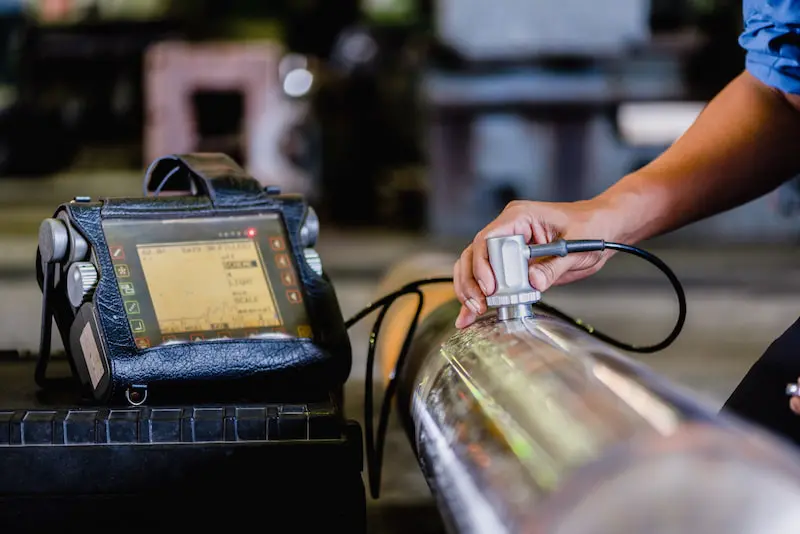Nondestructive testing (NDT) is the process of looking for flaws or differences in a material, component, or assembly without damaging the part’s or system’s ability to function normally.
Modern NDT testing is being utilized in manufacturing, fabrication, and in-service inspections to guarantee product dependability and integrity, to regulate production procedures.
To cut costs, and to maintain a constant level of quality. In-service NDT inspections are used to make sure that the products being used continue to have the integrity required to ensure their usefulness and the safety of the general public.
NDT is used during construction to ensure the quality of materials and joining processes during the fabrication and erection phases.
Although the medical industry employs many of the same techniques, it should be emphasized that the phrase “nondestructive testing” is often not used to describe medical applications.
NDT testing types
1.Visual NDT (VT)
Visual non-destructive testing is the process of gathering visual information about a material’s condition.
The most fundamental method of inspecting a substance or thing without making any changes to it is through visual testing.
2.Ultrasonic NDT (UT)
High-frequency sound waves are transmitted into a material during ultrasonic non-destructive testing in order to detect changes in the material’s properties.
3.Radiography NDT (RT)
Radiography Gamma or X-ray radiation is used during non-destructive testing to locate flaws in materials.
4.Eddy Current NDT (ET)
Eddy Current NDT testing is a kind of electromagnetic testing that uses measurements of the strength of electrical currents (also known as eddy currents) in a magnetic field surrounding a material to make judgements about the material, including potential defects’ locations.
5.Magnetic Particle NDT (MT)
When conducting magnetic particle non-destructive testing, flaws in a material are found by looking for interruptions in the magnetic field’s normal flow.
6.Acoustic Emission NDT (AE)
Sound Emission The process of using acoustic emissions to find potential flaws and imperfections in a material is known as non-destructive testing.
7.Dye Penetrant NDT (PT)
Color Penetrant Liquid penetrant testing, also known as penetrant non-destructive testing, is the process of coating a material with a liquid and looking for breaks in the coating to reveal flaws in the material.
8.Leak Testing (LT)
Non-Destructive Leak Analysis is the process of examining leaks in a vessel or structure to find flaws in it.
Benefits of NDT testing
The use of non-destructive testing, also known as NDT, is proving to be an extremely useful method for businesses to cut costs and save time.
Testing technologies such as these help businesses test for quality assurance and locate potential areas of risk or corrosion before these issues become problematic.
The effectiveness of non-destructive testing (NDT) is enhanced by the fact that materials are examined using techniques that do not compromise the usefulness or consistency of the substance that is being analyzed.
Because of this, the method is extremely helpful for establishing the safety and dependability of items that are presently being used as well as those that are planned to be used in the future.
Without harming the objects being examined, non-destructive testing (NDT) techniques can identify internal and exterior flaws and faults, ascertain the structure or composition of materials, and carry out precise measurements of the items that are being evaluated.
NDT Testing Services
- Aerospace – testing castings.
- Automotive – to test the durability of piston heads.
- Manufacturing – to test the quality of components before it goes into production.
- Medical devices – to test the durability and composition of stents.
- Military and defense – ballistics testing and analysis.
Why Power House?
With our world-class services in NDT testing, we can assist you in ensuring the dependability and safety of your goods, equipment, or plant assets.
We are familiar with the procedures that are required throughout the entirety of the product life cycle, beginning with product design and manufacturing and continuing with operation and maintenance.
Additionally, we are aware of the frequent requirement for quick turnaround times.
The production processes, quality control, and regulatory compliance that may be supported by our Total Quality Assurance services include also new construction, pipelines, plant maintenance, and planned shutdown inspections.



